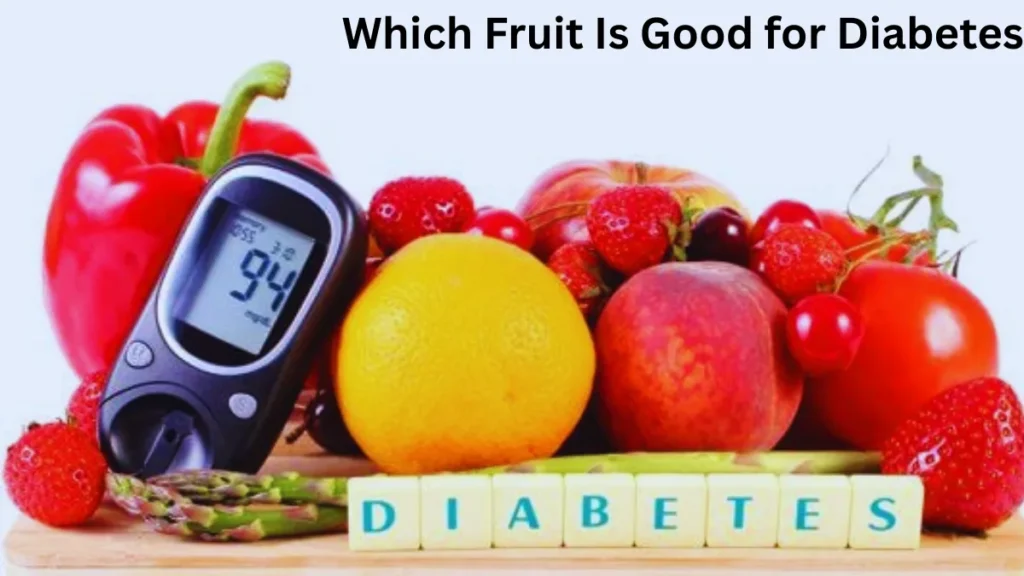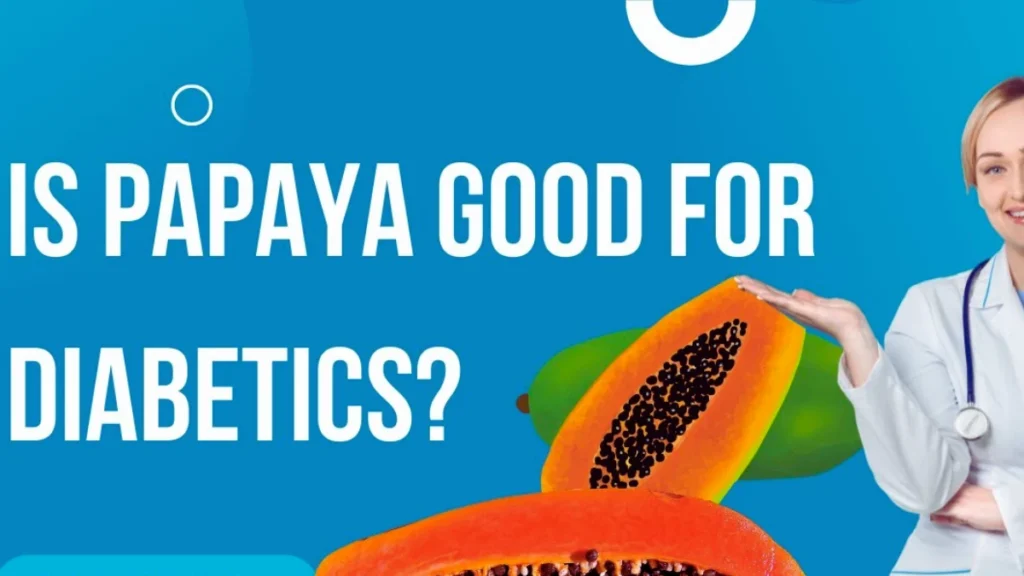Which Fruit Is Good for Diabetes
Which Fruit Is Good for Diabetes: Managing diabetes doesn’t mean giving up fruits. In fact, certain fruits are good for diabetes because they contain fiber, antioxidants, and essential nutrients that support overall health. But not all fruits are created equal—some may spike blood sugar while others help stabilize it. In this article, we’ll explore which fruits are ideal for diabetics, how they affect blood sugar, and the best ways to include them in your diet.

| Contact Us | Info |
|---|---|
| Address | Jolen Hospital, Velachery Road, Sembakkam, Chennai – 600073, Tamil Nadu, India |
| jolenhospital@gmail.com | |
| Mobile | +91 73058 55991 |
| Phone (Landline) | 044 2228 3001 |
Understanding Diabetes and Blood Sugar Levels
Diabetes is a chronic condition that affects how your body processes glucose. There are mainly three types:
- Type 1 Diabetes – The body doesn’t produce insulin.
- Type 2 Diabetes – The body resists insulin or doesn’t produce enough.
- Gestational Diabetes – Occurs during pregnancy.
Diabetics must be mindful of their glycemic index (GI) and glycemic load (GL). These numbers measure how quickly a food raises your blood sugar. Fruits with low GI and GL are better choices because they help prevent blood sugar spikes.
Criteria for Choosing Diabetic-Friendly Fruits
When picking fruits for diabetes, keep the following factors in mind:
- Low Glycemic Index (below 55)
- High in fiber to slow sugar absorption
- Packed with vitamins and antioxidants
- Portion-controlled to avoid excessive sugar
These criteria help identify fruits that provide nutrition without affecting blood sugar levels negatively.
Top 50 Best Fruits for Diabetes
| S.No | Glycemic Index (GI) | Key Benefit for Diabetics | Recommended Portion Size | |
|---|---|---|---|---|
| 1 | Apple | 36 | Rich in fiber and antioxidants | 1 medium apple |
| 2 | Pear | 38 | Low GI and high in vitamin C | 1 medium pear |
| 3 | Guava | 31 | Regulates blood sugar levels | 1 small guava |
| 4 | Papaya | 60 | Aids digestion and immune health | 1 cup (150g) diced |
| 5 | Orange | 40 | Rich in vitamin C and fiber | 1 medium orange |
| 6 | Berries (mixed) | 25 | Low in sugar, high in fiber | 1 cup |
| 7 | Strawberry | 41 | Antioxidant-rich, heart-friendly | 1 cup sliced (150g) |
| 8 | Blueberry | 53 | Improves insulin sensitivity | ½ cup |
| 9 | Blackberries | 25 | High in fiber and antioxidants | 1 cup |
| 10 | Raspberries | 32 | Anti-inflammatory and low GI | 1 cup |
| 11 | Kiwi | 50 | High in vitamin C and potassium | 1 medium kiwi |
| 12 | Pomegranate | 53 | Contains punicalagin and helps reduce sugar | ½ cup arils |
| 13 | Plum | 40 | Helps regulate appetite | 2 small plums |
| 14 | Peach | 42 | Source of vitamin A and fiber | 1 medium peach |
| 15 | Apricot | 34 | Good for eyes and skin | 2 small apricots |
| 16 | Cherries | 22 | Contains anthocyanins to reduce sugar | ½ cup |
| 17 | Grapefruit | 25 | Improves insulin resistance | ½ grapefruit |
| 18 | Avocado | 15 | High in healthy fats, supports blood sugar | ½ avocado |
| 19 | Watermelon* | 72 | High GI but low carb; eat in moderation | 1 small slice (100g) |
| 20 | Musk Melon (Cantaloupe) | 65 | Good hydration and fiber | 1 cup cubes |
| 21 | Fig (fresh) | 51 | Regulates sugar and supports heart health | 1 medium fig |
| 22 | Banana (small) | 51 | Good potassium source; eat in moderation | ½ medium banana |
| 23 | Dragon Fruit | 48 | Boosts insulin sensitivity | 1 cup cubes |
| 24 | Star Fruit | 36 | Low sugar and high in vitamin C | 1 medium fruit |
| 25 | Passion Fruit | 30 | Fiber-rich and antioxidant | 2 fruits |
| 26 | Gooseberry (Amla) | 20 | Powerful antidiabetic fruit | 1 raw or juice (30ml) |
| 27 | Jamun (Indian Blackberry) | 24 | Helps control blood sugar spikes | 1 cup |
| 28 | Mulberry | 25 | Controls sugar absorption | 1 cup |
| 29 | Custard Apple (in moderation) | 54 | High fiber, eat occasionally | ½ fruit |
| 30 | Lychee (fresh) | 50 | Vitamin-rich but eat in moderation | ½ cup |
| 31 | Longan | 49 | Contains polyphenols | ½ cup |
| 32 | Clementine | 40 | Easy to digest, vitamin C rich | 1 small fruit |
| 33 | Cranberries (fresh) | 45 | Anti-inflammatory | 1 cup |
| 34 | Persimmon | 50 | Rich in antioxidants | ½ medium fruit |
| 35 | Sapota (Chikoo) | 55 | Energy-dense; consume in small quantities | ½ fruit |
| 36 | Nectarine | 43 | High in vitamins A and C | 1 medium |
| 37 | Tangerine | 40 | Low sugar citrus fruit | 1 small |
| 38 | Gooseberry (Cape) | 35 | Immune-boosting properties | ½ cup |
| 39 | Jackfruit (raw) | 50 | Low GI when cooked raw | ½ cup |
| 40 | Bael Fruit | 30 | Traditional antidiabetic use | 1 slice or juice (30ml) |
| 41 | Currants (black/red) | 45 | Fiber-rich and antioxidant | ½ cup |
| 42 | Rambutan | 48 | Low GI, eat occasionally | 3-4 fruits |
| 43 | Olive (black/green) | 15 | Supports heart health, good fat | 5-10 olives |
| 44 | Coconut (water) | 3 | Hydration and low carb | 1 glass |
| 45 | Coconut (meat) | 42 | Contains MCTs, good in moderation | ¼ cup |
| 46 | Mango (in moderation) | 51 | High antioxidants; eat in small amounts | ½ medium mango |
| 47 | Pineapple (limited) | 59 | Eat in moderation, high in vitamin C | ½ cup cubes |
| 48 | Dates (1-2 only) | 42 | Natural sweetener with nutrients | 1-2 medium dates |
| 49 | Raisins (small qty) | 64 | Eat sparingly, high sugar | 1 tbsp |
| 50 | Tomato (technically a fruit) | 15 | Very low GI, excellent for diabetes diet |
Here are the top 10 fruits safe for diabetics, along with benefits and suggested portions:
1. Berries (Blueberries, Strawberries, Raspberries)
- GI: 25–40
- Rich in antioxidants, vitamin C, and fiber.
- Berries help improve insulin sensitivity and reduce inflammation.
2. Apples
- GI: 36
- Contains pectin, a fiber that regulates blood sugar and cholesterol.
- Eat with skin for maximum fiber.
3. Pears
- GI: 38
- High in fiber and vitamin C.
- Support digestive health and blood sugar stability.
4. Oranges
- GI: 40
- Rich in vitamin C and flavonoids.
- Better to eat whole rather than juice to retain fiber.
5. Guava
- GI: 12–24
- Extremely low GI, high in fiber and vitamin A.
- Helps regulate blood sugar and boost immunity.
6. Papaya

- GI: 60 (medium, but high fiber offsets impact)
- Contains antioxidants and digestive enzymes.
- Eat in moderation for anti-inflammatory benefits.
Read more: Is Papaya Good for Diabetes? Benefits, Risks & Expert Opinion
7. Kiwi
- GI: 50
- Excellent source of vitamin C and fiber.
- Helps regulate blood glucose levels.
8. Cherries
- GI: 20
- Contain anthocyanins that may help lower blood sugar.
- Enjoy fresh, not canned with syrup.
9. Avocado
- GI: 15
- Technically a fruit, very low in carbs.
- Rich in healthy fats and fiber, supports heart and sugar control.
10. Pomegranate (in moderation)
- GI: 53
- Packed with antioxidants and anti-inflammatory compounds.
- Drink pure juice or eat seeds in moderation.
Fruits to Limit or Avoid
While many fruits are diabetic-friendly, some are best avoided due to high sugar content:
| Fruit | Reason to Avoid |
|---|---|
| Bananas (overripe) | High in carbs and sugar |
| Grapes | High glycemic load |
| Mangoes | High sugar and can spike blood sugar quickly |
| Pineapple | High GI (~66), especially in juice form |
| Watermelon | High GI (72), low fiber |
| Dried fruits | Concentrated sugar content |
| Fruit juices | Lack fiber, high sugar concentration |
If you love these fruits, eat small portions and pair them with proteins or healthy fats to reduce impact.
Portion Control and Smart Eating Tips
Even diabetic-friendly fruits can raise blood sugar if consumed in excess. Follow these tips:
- Stick to one small fruit or ½ cup of chopped fruit per serving.
- Pair fruits with protein (e.g., apple with peanut butter).
- Choose whole fruits over juices or dried fruits.
- Distribute fruit intake across meals—not all at once.
- Monitor your blood sugar after eating new fruits.
What Experts Recommend
According to the American Diabetes Association (ADA):
“Most fruits are packed with nutrients and fiber. Whole fruits with a low GI are best, and diabetics should avoid juices and dried fruits.”
Nutritionists also recommend:
- Eating fruits with skin when possible.
- Choosing seasonal and fresh fruits for maximum benefits.
- Avoiding canned fruits with added sugars.
Sample Diabetic Fruit Chart
Here’s a handy table to guide you:
| Fruit | Glycemic Index | Serving Size | Sugar (g) per Serving |
|---|---|---|---|
| Apple | 36 | 1 medium | 19g |
| Berries | 25–40 | 1 cup | 7–15g |
| Guava | 12–24 | 1 medium | 5g |
| Orange | 40 | 1 medium | 12g |
| Pear | 38 | 1 medium | 17g |
| Kiwi | 50 | 1 medium | 6g |
| Papaya | 60 | ½ cup cubes | 8g |
| Cherry | 20 | 10 cherries | 8g |
| Pomegranate | 53 | ½ cup seeds | 13g |
| Avocado | 15 | ½ avocado | <1g |
Conclusion
Fruits are not off-limits for diabetics. The key lies in choosing the right fruits, watching portion sizes, and understanding how each affects your blood sugar. Berries, apples, pears, and guava are excellent choices for people with diabetes. Always monitor your blood sugar levels and consult your healthcare provider for personalized dietary advice.
FAQs
1. Can people with diabetes eat fruits every day?
Yes, in moderation. Choose low-GI fruits and watch portion sizes.
2. Is banana safe for diabetics?
Occasionally in small portions, preferably less ripe.
3. Are fruit juices safe for diabetics?
No. Whole fruits are better due to fiber content.
4. What is the best fruit for type 2 diabetes?
Berries, guava, and apples are highly recommended.
5. Can diabetics eat mangoes?
Only in very small portions and with other low-GI foods.
6. Should fruits be avoided at night?
No, but eat in moderation and avoid high-sugar fruits before bed.
7. Are dried fruits good for diabetes?
Not usually. They are high in sugar and calories.
8. Is watermelon okay for diabetics?
It has a high GI, so eat in very small amounts occasionally.
9. How many fruits can a diabetic eat per day?
1 to 2 servings per day is considered safe.
10. Which fruit reduces blood sugar quickly?
Fruits like guava and berries help stabilize, but they don’t reduce sugar instantly.


